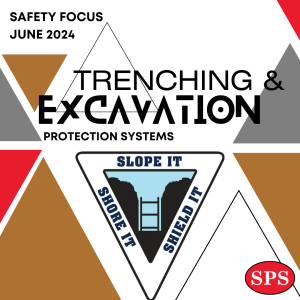DYK: Two workers are killed every month in trench collapses. In trenching and excavation work, trench collapses, or cave-ins, pose the greatest risk to workers’ lives.
When done safely, trenching operations can reduce worker exposure to other potential hazards including falls, falling loads, hazardous atmospheres, and incidents involving mobile equipment.
In general, an excavation is any man-made cut, cavity, trench, or depression in an earth surface, formed by earth removal. A trench is an excavation that is made below the surface of the ground. In general, the depth is greater than the width, but the width of a trench (measured at the bottom) is not greater than 15 feet. Proper precautions should be taken to protect workers and the public from hazards created by trenching and excavation.
In trenches 5ft deep or greater, a protection system involves 3 S’s: Sloping, shoring and shielding – Sloping involves cutting back the trench wall at an angle inclined away from the excavation. – Shoring requires installing aluminum hydraulic or other types of supports to prevent soil movement and cave-ins. – Shielding protects workers by using trench boxes or other types of supports to prevent soil cave-ins.





